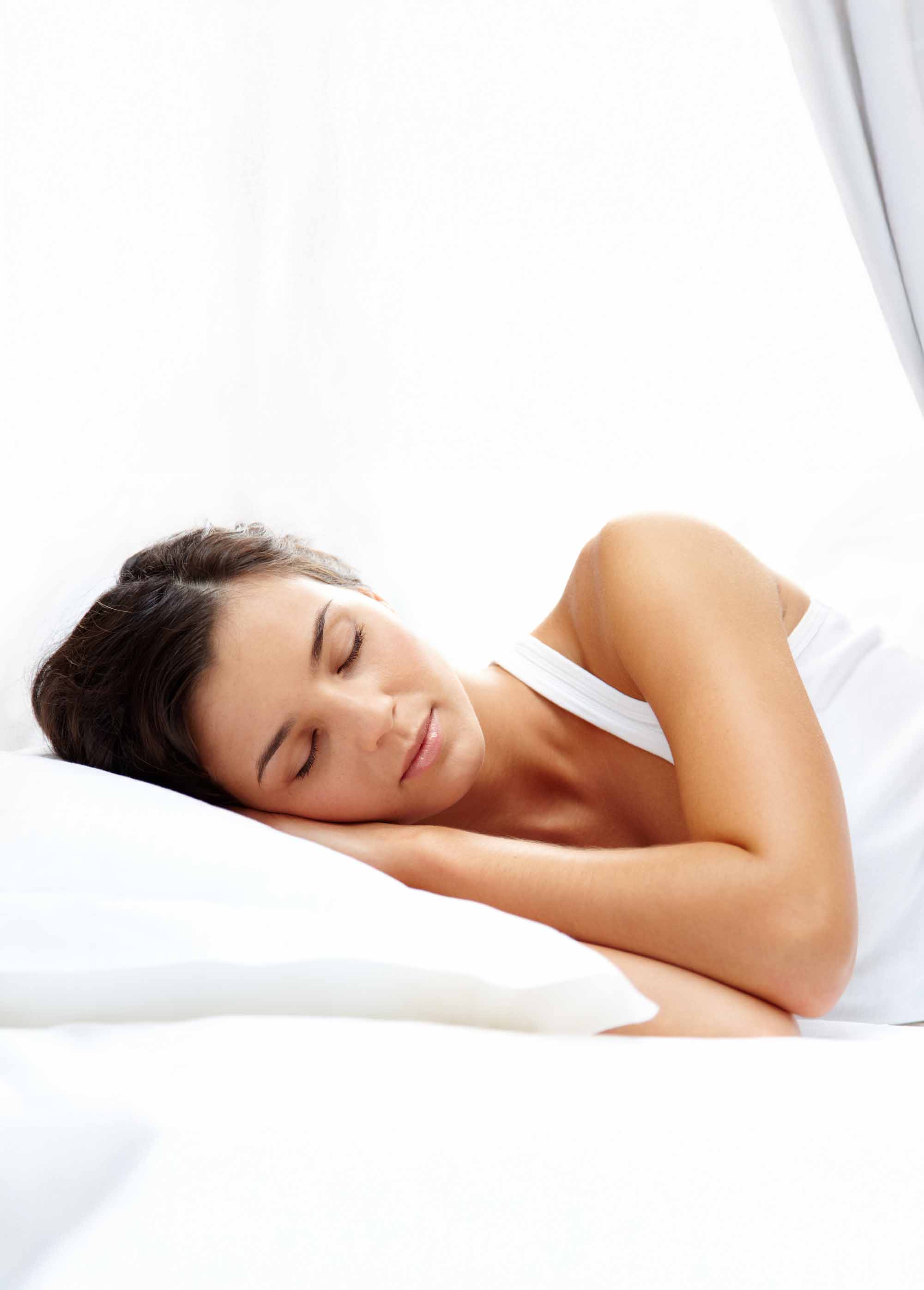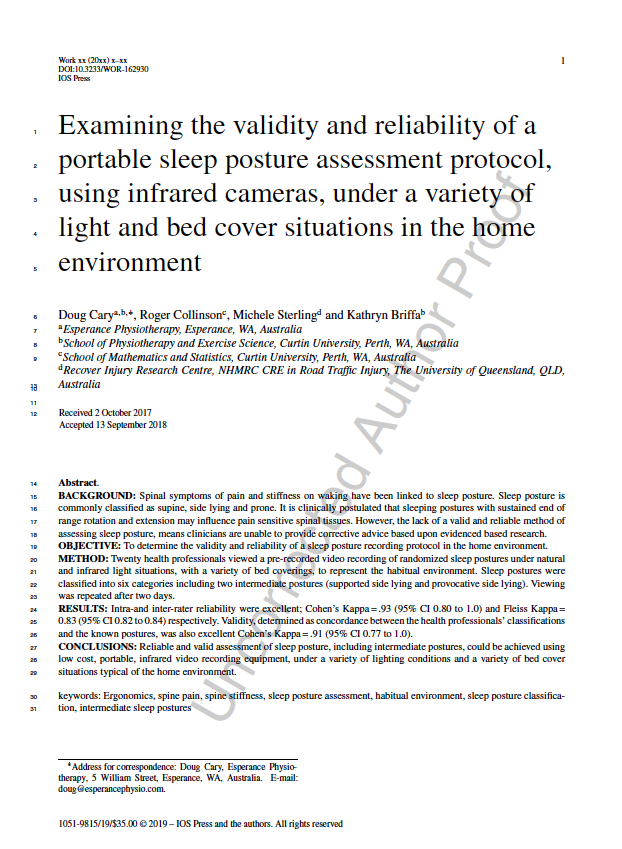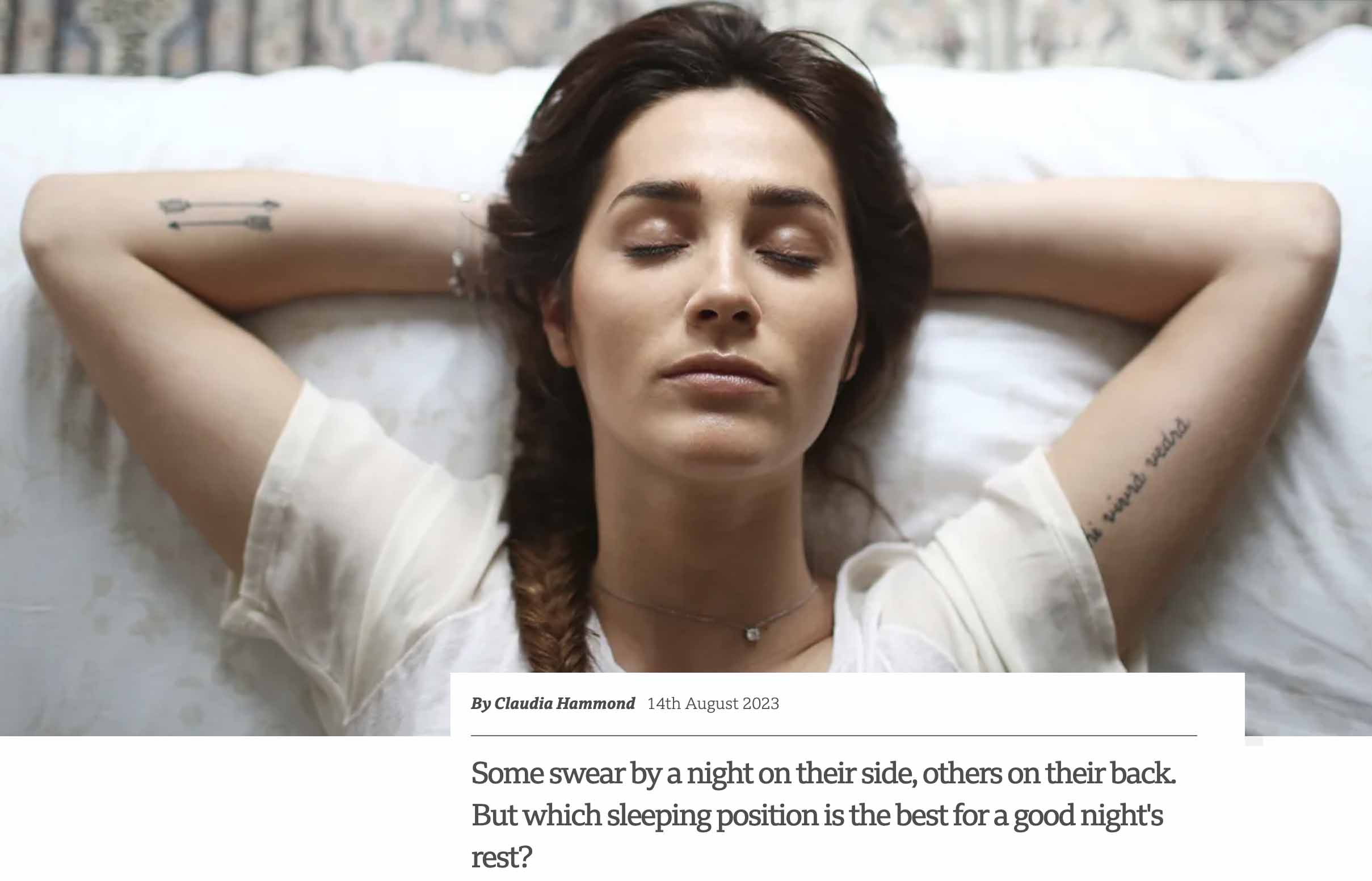Sleep Mastery
 This page is a review of Dr Doug Cary's, Master's & PhD research examining relationships between sleep posture and waking spinal symptoms, that is pain, stiffness and bothersomeness, plus the relationship with sleep quality. This research is world-leading in the examination and assessment that sleep posture contributes to spinal symptoms and poorer sleep quality.
This page is a review of Dr Doug Cary's, Master's & PhD research examining relationships between sleep posture and waking spinal symptoms, that is pain, stiffness and bothersomeness, plus the relationship with sleep quality. This research is world-leading in the examination and assessment that sleep posture contributes to spinal symptoms and poorer sleep quality.
If you are a clinician wanting to incorporate these findings into your clinical practice to optimise your client's recovery potential then;
 Jump directly to the Sleep Mastery online course
Jump directly to the Sleep Mastery online courseClinical Research: Sleep Posture and Waking Spinal Symptoms
We spend 1/3 of our life sleeping, so what happens at night is critical to optimising our ability to recover - both physically and mentally. As clinicians, we regularly discuss with clients their diurnal load, there has been a big gap in our understanding regarding the nocturnal load placed upon our spinal tissues. Our research conducted over the past 10 years has shown that we can’t rely on self-report of sleep posture from our clients to accurately inform us of their sleep postures, yet the postures we sleep in are critical to understanding the nocturnal biomechanical loads our spines experience. Essentially the more load, the more symptoms or spinal reactivity.Initial Background Research
Developing Tools To Measure Sleep Posture Accurately
Comparing Sleep Posture and Symptomatic/Non-Symptomatic Sleepers
The fourth paper in our series of sleep studies compared symptomatic (neck or lumbar) and our control group across a broad range of pain, sleep and quality of life measures. The aims of this research were to compare sleep posture and sleep quality in participants with and without waking spinal symptoms. This is the first study using a validated objective measure of sleep posture to compare symptomatic and Control group participants sleeping in their home environment. In general, we found that participants with waking spinal symptoms spent more time in provocative sleep postures, and experienced poorer sleep quality. This paper is titled Examining relationships between sleep posture, waking spinal symptoms and quality of sleep: A cross-sectional study, published in PLOS One.
While we suspected that people sleeping in certain postures could be provocative of waking spinal symptoms, we were surprised to find that this also reflected through to their sleep quality. When sleep quality is negatively affected, this has flow-on effects to a much broader range of health outcomes like; memory & learning, fertility, maintaining a healthy body weight, cardiovascular health (high blood pressure, heart attack, stroke) and workplace injuries. So in addition to preventing waking spinal pain, improving sleep posture could also be an important aspect in a range of other health domains.
Current Research
- If participants are able to change their sleep posture when asleep and if they can,
- What changes are noted in their regular waking spinal symptoms and
- Validated baseline quality of life, quality of sleep and spinal disability questionnaires.
Data has been collected and analysed and will be written for manuscript submission or conference presentation.
Interviews
NPR The Pulse: Episode Interview with mbg 29/3/2022 Podcast with Marion McCrae Article by Claudia Hammond
'Chasing Sleep' starts @ 16 mins on sleep posture and sleep systems Sleep & Spinal Pain BBC Future
Interviews on the ABC Perth Early Morning Program with Hilary Smale
Free Sleep & Spinal Pain Webinar
In this 90-minute webinar presented to the Australian Osteopathic Association of Australia, you will learn about the clinical relationships between short sleeping and poor health, sleep posture and waking spinal pain and some handy subjective and objective methods to include in your assessment.
Options to Listen
Youtube
Podcast
The 14-Night Sleep Posture Challenge

To assist in the process of knowledge translation from research to real life, we have created a unique sleep posture challenge. Once you have signed up, you will receive three emails providing background information and a video explaining how to optimise your sleep posture.
As a bonus, you will also receive 16 tips on improving sleep hygiene and additional material on how to select your mattress and pillow based on current research findings.
If you would like to better understand and improve your sleep posture - take the challenge.
The Sleep Mastery Online Course
Available now as an Everygreen course to assist clinicians in translating this research into actionable clinical practice. Key information from this research has been combined with sleep hygiene training, cognitive behaviour therapy for insomnia and validated outcome questionnaires, presented as The Sleep Mastery online course. If you are an early adopter of new research, you can enrol in this course now.










